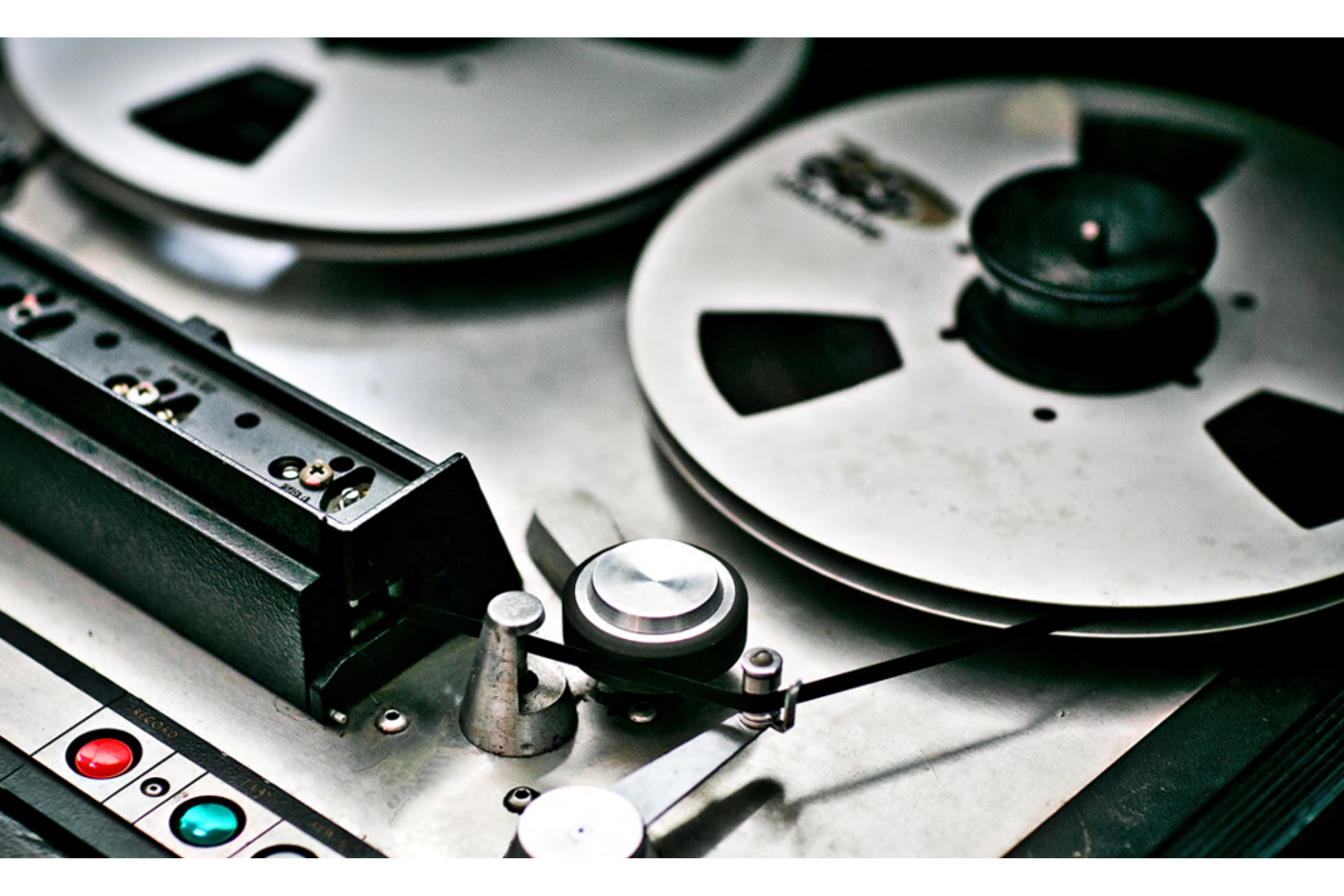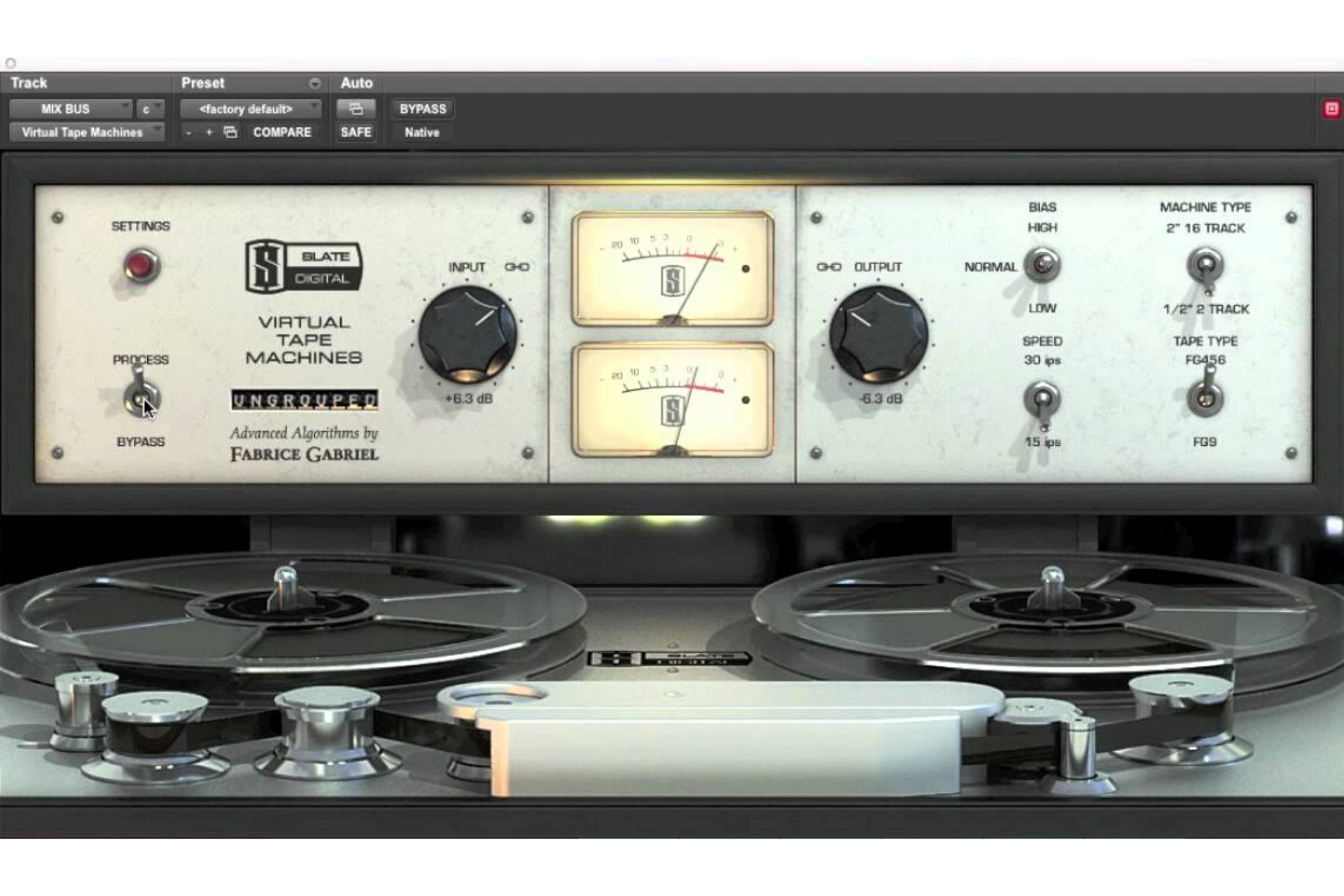Saturation in Mixing – Instant Warmth, Glue and Fullness with One Plugin
Does either one of these situations ring a bell: Have your mixes ever sounded a bit lifeless and thin compared to the commercial pro mixes out there, even though you did exceptionally fine job with mixing? Have your individual sounds ever sounded lifeless and sort of spiky? They’re not pleasing to the ears and no matter how hard you EQ, you can’t seem to fit them in the mix? Both of these situations applied to me, before I found about saturation in mixing and in sound design.
With saturation, you can create wonders with just one plugin. How awesome is that? Many say it is the missing ingredient from mixes. Saturation creates imperfection, but ironically that’s what everybody’s looking for. In this post you’ll find a short info about saturation, ways how saturation in mixing can improve your songs and ways to apply saturation effectively.
What Is Saturation in Music?
Saturation is something that made analog hardware sound so musical. When audio goes through analog tape, tube or transistor circuits, it gains pleasant harmonics that clear the nasty edge of the sound. Analog hardware, such as tapes, tubes or transistor-based preamps are overloaded so that they clipped a little. A results is a musical sound with ear pleasing presence, warmth, colour, character, fullness and even perceived loudness.
In all simplicity, perceived loudness – in this case – is something that feels louder than it actually is. It isn’t actually any louder, but your ears perceive it to be louder.
Nowadays many big studios – and the bulk of the home studios – use digital hardware, such as a computer accompanied with digital audio interface instead of analog hardware. Why? Because analog hardware is more expensive, takes more physical space and you can get the same sort of results with digital hardware anyway, thanks to the saturation plugins.
What if you just overload digital audio the same way as analog audio were used to? Don’t do it. You don’t want to clip digital audio, because it’s just ones and zeros, a computer doesn’t know how to saturate the sound a nice way like analog hardware. It just sounds awful and will ruin your audio. Why’s that?
Without going too deeply into technical world, just know that when analog audio is converted to digital, it is packed to these little series of samples, that a computer uses to represent the sounds correctly. If the digital audio is clipped, then part of those samples are lost and a computer interprets that as an unmusical and horrible sounding distortion. That’s nothing like analog distortion. This is not a problem, as long as you avoid digital clipping, you can emulate the analog characteristics with saturation plugins.
The Main Types of Audio Saturation Plugins
Tape Saturation
Tape saturation plugins emulate the sound of analog tape machines. In the process of recording into the tape, as a “side product“ was saturation that gave subtle compression and warm sound. The warmness results from the saturation rolling off some of the high end of the audio. Subtle compression rounded off transients. As a result, the analog sound that came out of a tape machine was musical and pleasing, but also punchy and fat.
Tube Saturation
Tube saturation plugins emulate the sound that is driven through a tube amp. It saturates audio a little differently compared to tape machines, adding a different kind of colour and character to it. This is because they add different kinds of harmonics to the sound.
Tube saturation is considered as more musical. It can be driven very hard and it still retains musicality. Tube saturation can give you that aggressive edge, if that’s what you’re looking for. It also adds compression, perceived loudness, warmth and punchiness to the sound.
Transistor Saturation
Transistor saturation plugin is – surprise surprise – an emulation of audio driven through transistor-based circuits. It is a versatile tool, since transistor saturation can create anything from very subtle to really aggressive, “fuzzy” distortion. It removes punchiness and dynamics when pushed hard.
How Saturation Improves a Mix?
Saturation will give you some of that analog warmth and musicality that people talk about. It tames the peaks and transients musically and at the same time delivers character and colour, that is really hard (if not impossible) to achieve any other way.
Saturation can be applied to everything from individual tracks to mix bus, it has its place both in sound design (like when you’re crafting synth sounds) and mixing. Like with everything else in the mixing world: be gentle, a little goes a long way.
However, it’s not the holy grail to mixing, it’s not going to fix a bad sounding mix. Saturation is going to enhance your otherwise good and balanced mix, which will take your mix to the next level. It’s that little notch of extra glue, warmth, punch, fullness, depth, character and colour that your mixes have been missing.
Notice that you can’t really get the same results with just EQ, because saturation adds harmonic distortion to the audio, which a simple EQ doesn’t do.
Ways to Use Saturation in Mixing
Like mentioned earlier, saturation can be used in many occasions. Here are some examples of where to use audio saturation and in fact, these are the places I find myself using saturation the most.
Mix Bus
Using a tape saturation or analog console emulation plugin on the Mix Bus, adds cohesive glue to the whole mix, because of the subtle compression. It also rolls some of the high end off while boosting lows, thus taking the overall sound closer to the “warm analog sound”. Analog console emulation plugin will do the same kind of thing, as it emulates the warm sound of analog consoles.
Drums
Tape saturation on a drum bus decreases the harshness and edge of drums. It rolls off some of the high end and tames the transients it makes drums more ear pleasing and consistent. Also a tape saturation will add punch and character to the drums. By driving a tube or transistor saturation plugin vigorously, you can create a desired “smashed drums” effect.
Guitars
Like with drums, saturation takes the nasty edge off, while in turn giving some warmth, colour and even loudness (without actually making guitars any louder). This will help guitars to cut through a tense mix. Saturation is also a great tool to fatten up thin sounding guitar tracks.
Vocals
Some saturation will help to get that crisp and full sounding vocal sound, as it tames the transients, gives warmth and fullness. The vocal track becomes more consistent. Smooth sounding vocals can easily be buried in the mix. Tube saturation can create that extra edge to help the vocals cut through better, without making them sound annoying.
Synths
Virtual instrument synth sounds can sound a bit “too digital” and static, if you know what I mean, they don’t have almost any character or life in them. Saturation, especially tube or transistor saturation will breathe some analog feel to them, making them more exciting, gritty or even fuzzy.
Parallel Saturation
Parallel saturation is similar to parallel compression, where you combine aggressively compressed sound with uncompressed sound. With parallel saturation you can take the best parts of both digital and analog worlds, and you can easily control the amount of saturation. An example of this might be a heavily distorted bass track together with a clean DI-signal, or a really crisply saturated vocal track blended with unsaturated vocals.

Summary
To sum up briefly, saturation plugins are there to even up the cap between analog and digital world. The main types of saturation are tape, tube and transistor. Saturation adds harmonic distortion to the audio, which can’t be achieved with any other tool. It is a great way of adding glue, warmth, colour, character, perceived loudness, fullness and distortion to the sound.
However, after all the “ warm analog sound” – hype, be careful of using too much of saturation, start with subtle settings and go from there. It’s easy to ruin an otherwise good mix with too much saturation and distortion. Overall, saturation in mixing is a tool that everyone should be using.
If you’re struggling to translate songs from your head to the real world, you’re stuck in a composing process or you’re suffering from writer’s block, download this PDF-guide. It’s yours for free today, no strings attached.



1 thought on “Saturation in Mixing – Instant Warmth, Glue and Fullness with One Plugin”